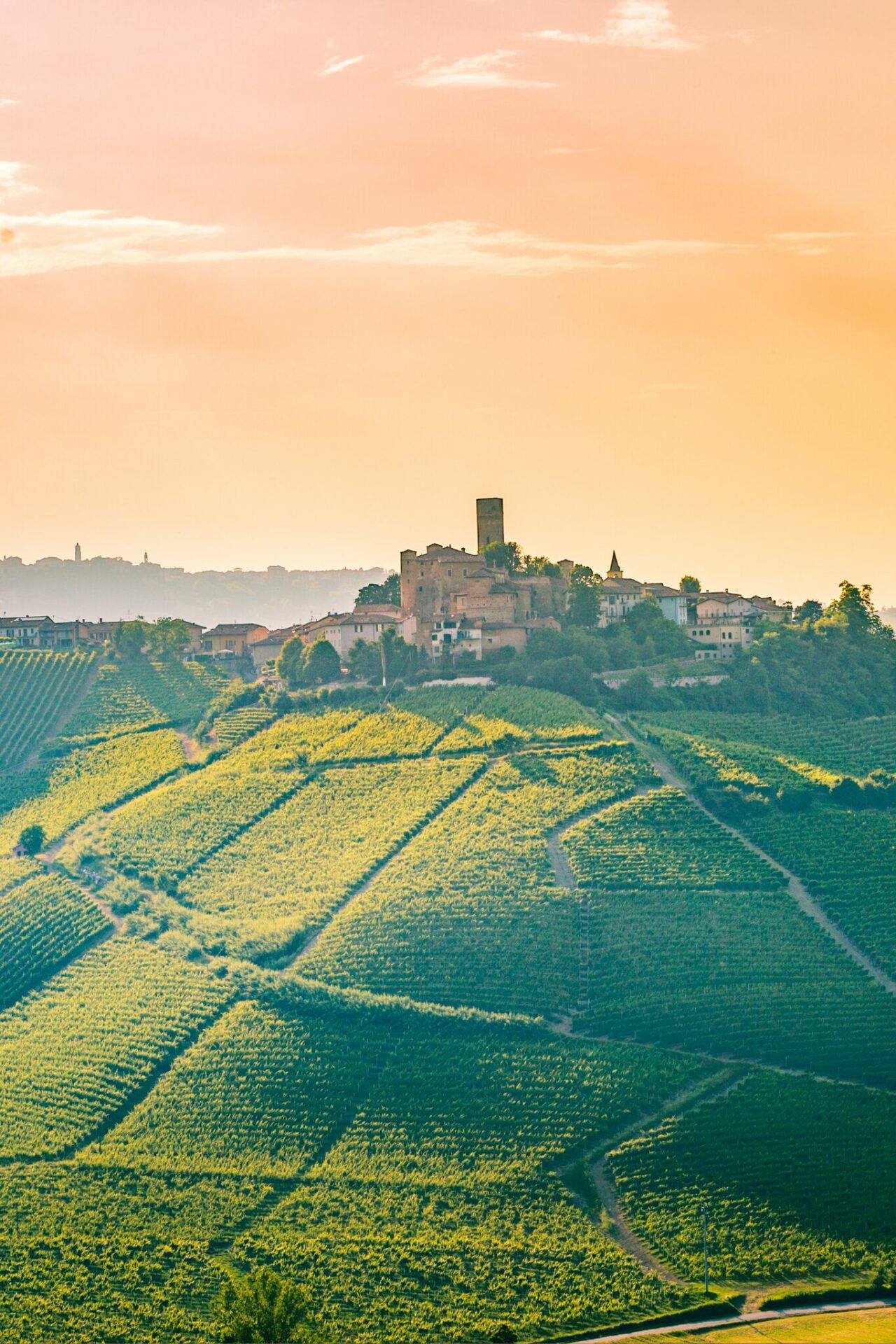
When I had my first ever sip of Barolo wine, I was told it was called “King of Wines.” It didn’t take long to understand why Barolo has earned such a royal reputation. As the rich flavors of cherry, roses, and a hint of tar unfolded, I knew I was drinking something truly special.
In fact, Barolo red wine got its nickname “King of Wines” because it was a favorite of royalty, including the Savoy family, who contributed to its popularity. But you don’t need a crown to appreciate it.
In this article, I’ll share more about why Italian wine Barolo is so prestigious, how it’s made, and the best ways to enjoy it. By the end, you’ll see why Barolo stands tall as one of Italy’s finest reds.
A Brief History of Barolo Wine Grape
Barolo DOCG, has been produced for centuries. It gained popularity in the 19th century as a premium wine, especially among the aristocracy. Historically, Barolo was a sweet wine, but that changed in the mid-19th century new and improved winemaking methods were introduced.
French oenologists, working with local producers, introduced methods that allowed the Barolo grape to fully ferment, turning it from sweet to dry. The Marchesi di Barolo family, particularly Giulia Colbert Falletti, played an important role in shaping Barolo’s reputation.
Giulia Colbert, the last Marchesa of Barolo, helped promote the wine in the 19th century, making it famous across Europe. Today, the Marchesi di Barolo winery remains one of the most important producers of this prestigious wine.
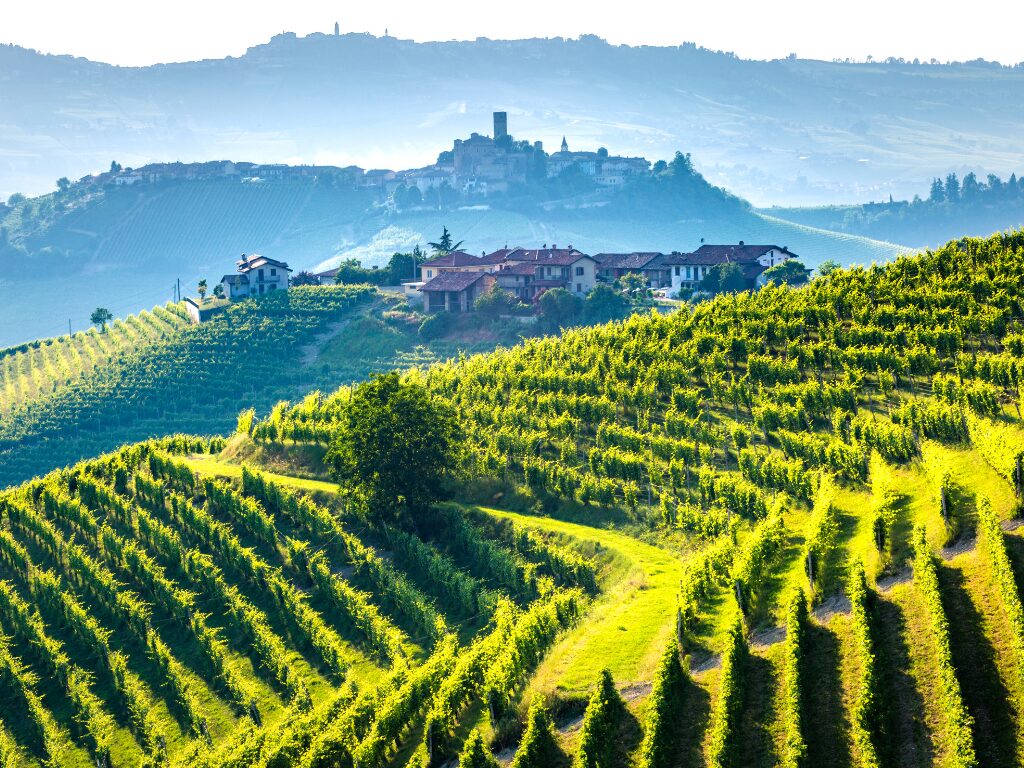
What’s the Barolo Wine Region Like?
The Barolo wine region, Italy is a mix of cool continental climate, unique soils, and hilly geography. The cool climate gives the Nebbiolo grapes a long time to ripen slowly, adding rich flavors. The soil is full of limestone and clay, and brings minerals and structure to the wine.
Barolo region has many crus, or special vineyards, that produce wines with different tastes. Each vineyard has its own microclimate – meaning slight changes in sunlight, height, and soil type.
These differences affect how ripe the Barolo grape variety gets and how much acidity and tannins are in the wine. That’s why wines from different Barolo vineyards can taste unique, even though they all use Nebbiolo grapes.
How Barolo Wine is Made
Barolo wine is made in two main styles: traditional and modern.
The traditional way uses long maceration times (around 25 to 30 days) to pull out lots of tannins from the Nebbiolo grape.
Afterward, it is aged in large, neutral oak barrels. This keeps the natural flavors but makes the wine very tannic and tough, so it needs years to soften.
Modern producers, however, use shorter maceration and new French oak barrels. These add vanilla flavors and soften the tannins faster, making the wine smoother and ready to drink sooner.
Today, many Barolo winemakers combine both methods, creating wines with the depth of traditional Barolo but with also the easier drinkability of modern styles.
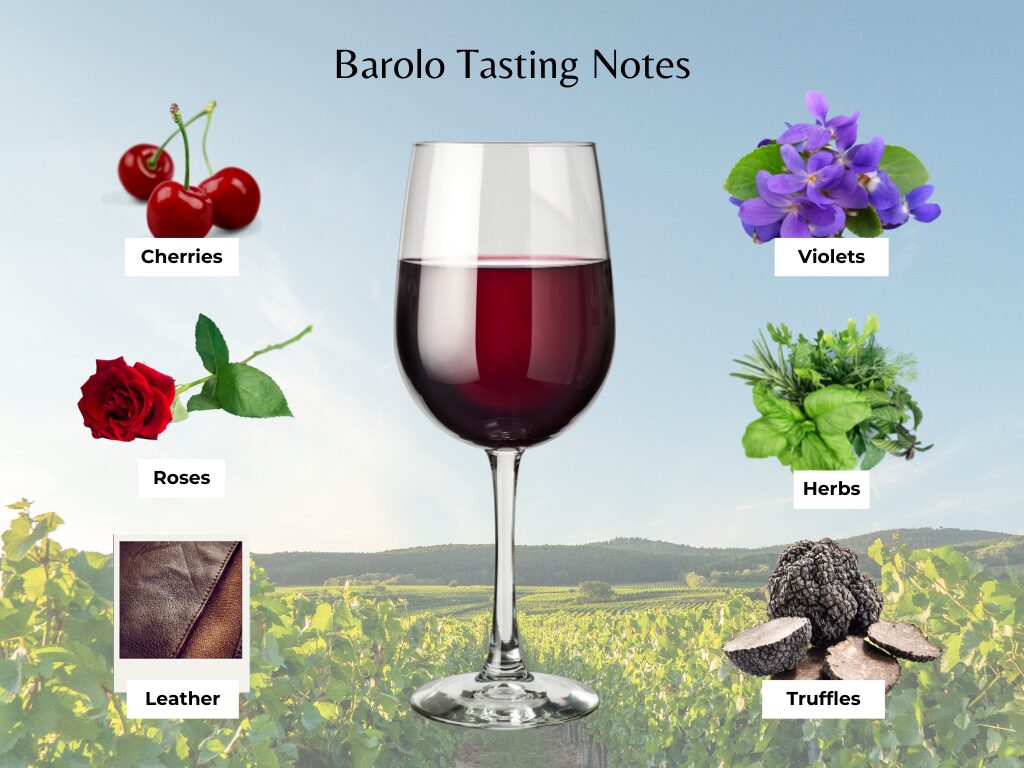
What does Barolo Taste Like?
Barolo’s taste is rich with complex flavors. You often get red fruits like cherries mixed with earthy notes like tar and leather. Barolo wine-tasting notes also have floral aromas like roses, and sometimes violet. As it ages, deeper flavors like truffle and dried herbs show up, making it even more layered.
Structure
Barolo, Piedmont, Italy, is a full-bodied wine, meaning it feels rich and heavy when you drink it. It’s known for having high tannins, which can make it feel dry, and high acidity, keeping it fresh. This strong structure allows it to age beautifully for many years.
How it changes with age
As Barolo ages, the tannins soften, making it smoother. The fruit flavors mellow out, while more earthy notes like leather, tobacco, and truffle become stronger. The aromas also get more complex as the wine matures
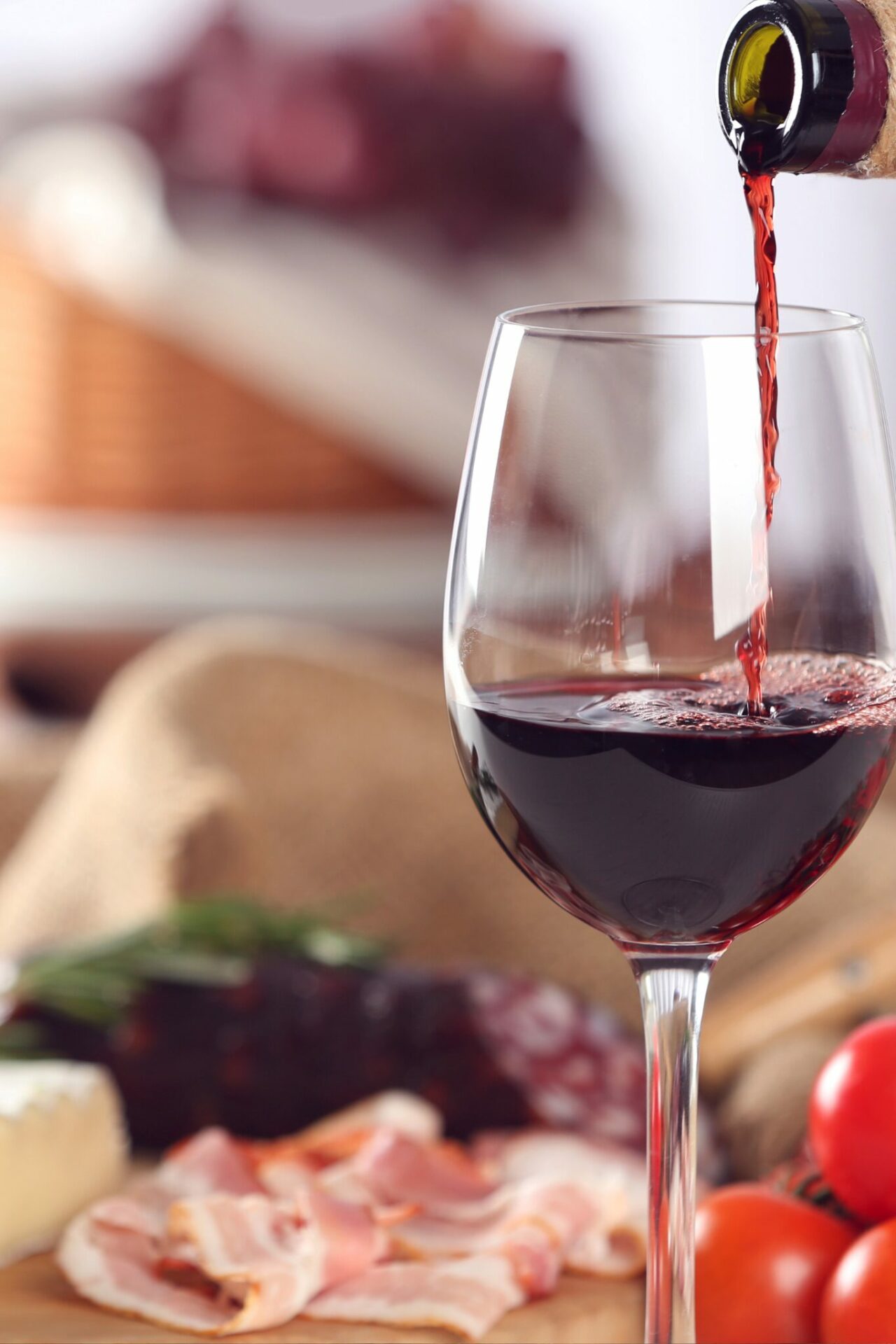
General Tips for Pairing Barolo with Food
Italian red wine Barolo is a full-bodied wine with high tannins, which pairs best with bold, rich flavors.
- Dishes with earthy, savory ingredients like mushrooms, truffles, or slow-cooked meats work well because they balance the wine’s structure.
- Avoid light or delicate foods, as Barolo’s powerful taste can easily overpower them.
- The wine’s acidity also helps cut through fatty or creamy dishes, cleansing the palate.
Specific dishes that complement Barolo’s robust flavor profile
- Truffle dishes, such as risotto with truffles or mushroom-based sauces, are excellent with Barolo.
- Braised meats like short ribs or lamb shank match the wine’s depth and intensity.
- Rich pasta dishes, such as egg pasta with sausage in red sauce, and hearty stews like venison or prime rib also pair beautifully, enhancing Barolo’s earthy and fruity notes.
Related: The Complete Guide to Pairing Wine with Italian Food
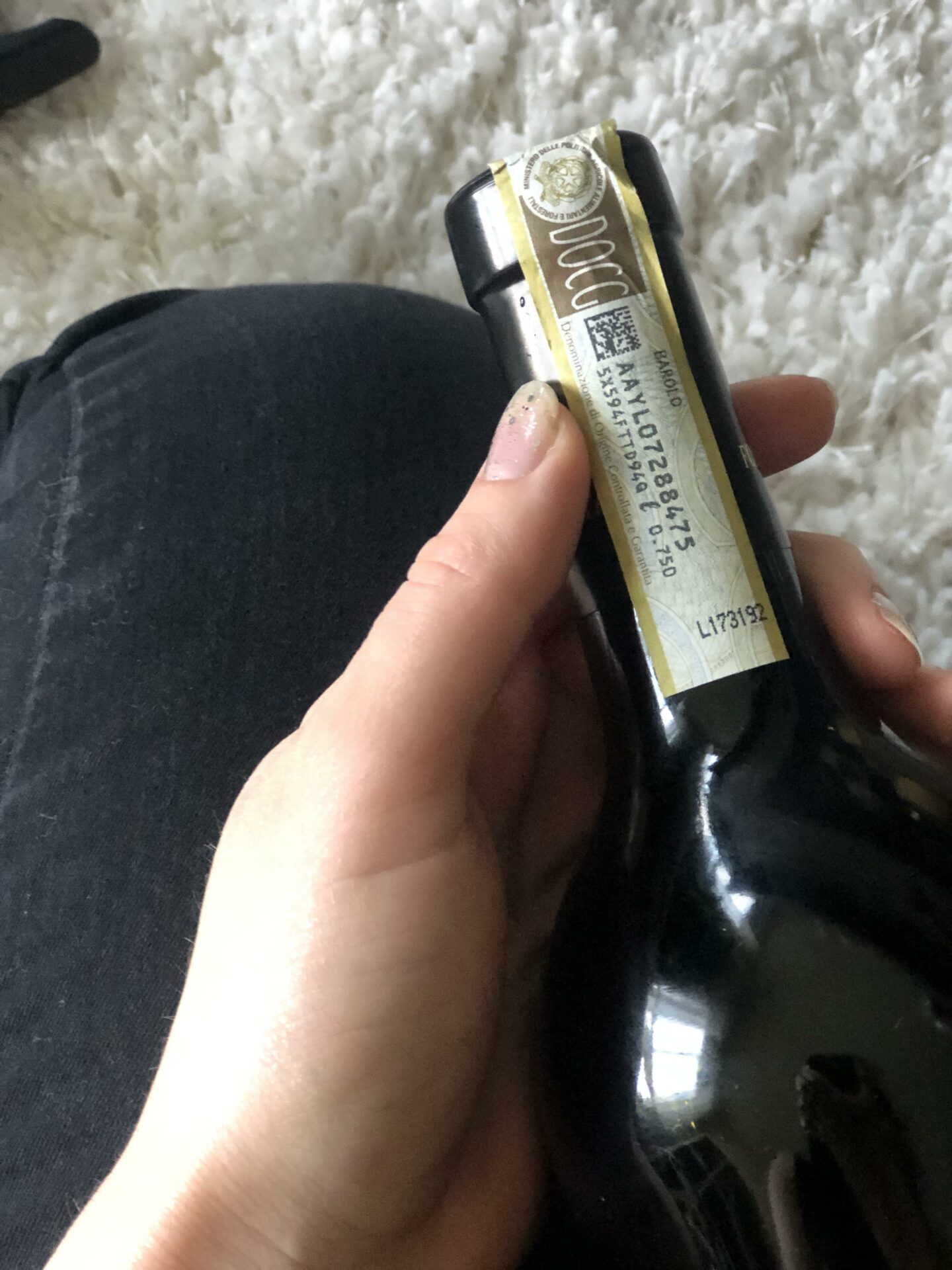
Serving and Storing Barolo Wine
How to Choose and Buy Barolo Wine
- Look for the DOCG label: Barolo wines with a DOCG (Denominazione di Origine Controllata e Garantita) label show that they meet strict quality standards in Italy.
- Check the aging requirements: Regular Barolo must be aged for at least 3 years, while Barolo Riserva requires 5 years of aging. Make sure to choose based on how long you prefer the wine to be aged.
- Choose by vintage: Barolo wines can vary depending on the year they were made. Some years produce better grapes due to weather conditions, so checking vintage ratings can help you find the best wines.
- Pick a trusted producer: The producer’s reputation is important for consistent quality. Well-known Barolo producers usually deliver high-quality wine every time.
Tips for serving Barolo
- Barolo should be decanted for up to four hours before serving to help open up the flavors, especially for younger bottles. For older wines, place the bottle upright up to 24 hours before you need it.
- Use large-bowled wine glasses to allow the wine to breathe and fully express its aromas.
- Serve Barolo at a slightly cool room temperature, ideally between 62°F and 68°F (17°C to 20°C), to bring out its best characteristics.
How to store Barolo for aging or immediate enjoyment:
- Store Barolo in a cool, dark place with a consistent temperature, ideally around 55°F (13°C).
- Keep the bottle on its side to ensure the cork stays moist and doesn’t dry out, which could let air into the bottle.
- Avoid placing Barolo near strong odors or vibrations, as they can affect the wine’s aging process.
Barolo is generally best enjoyed after at least 10 years of aging, but top-quality bottles can be aged for 20 to 30 years or more. For earlier drinking, open younger bottles after 5 to 8 years, but make sure to decant them before serving
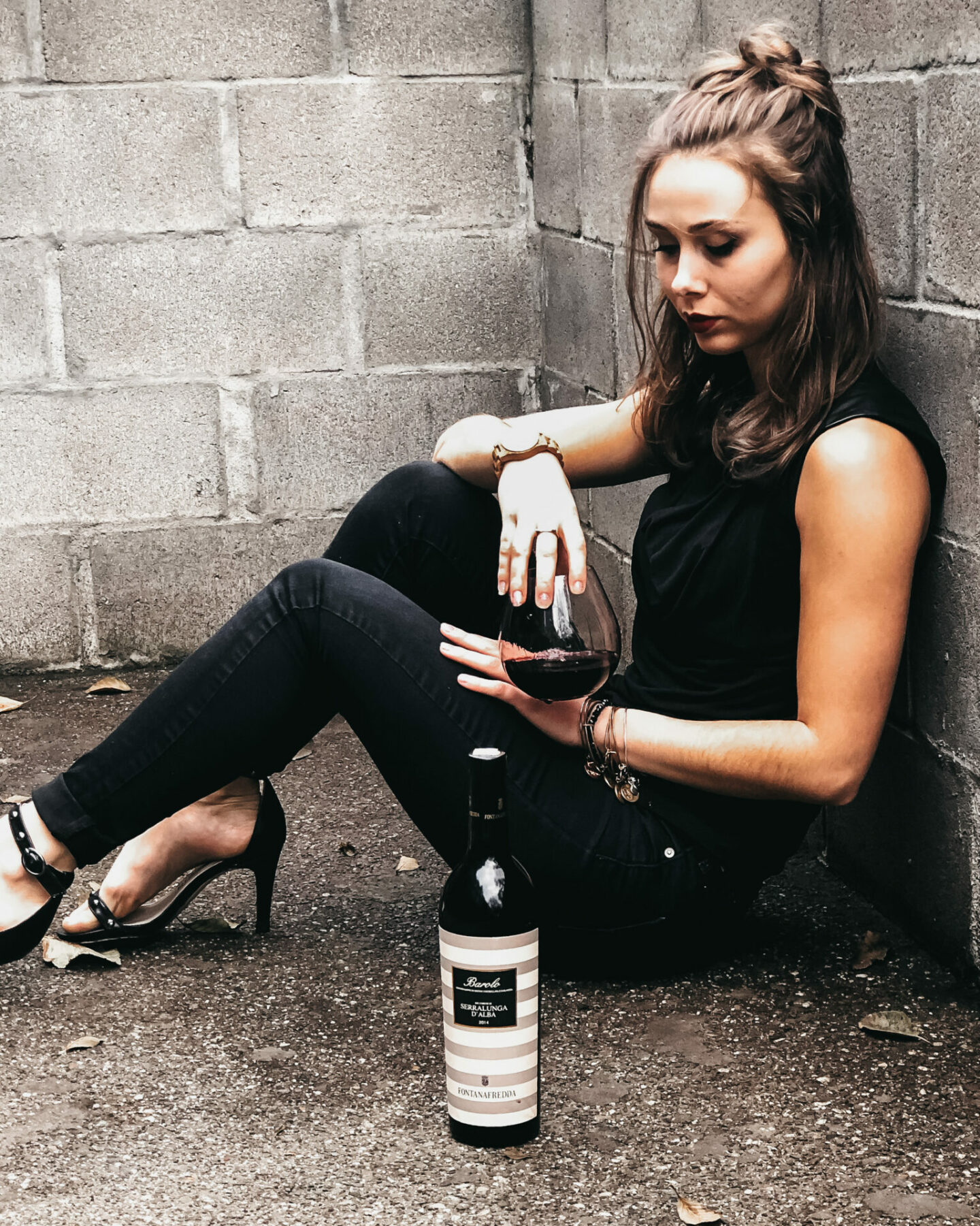
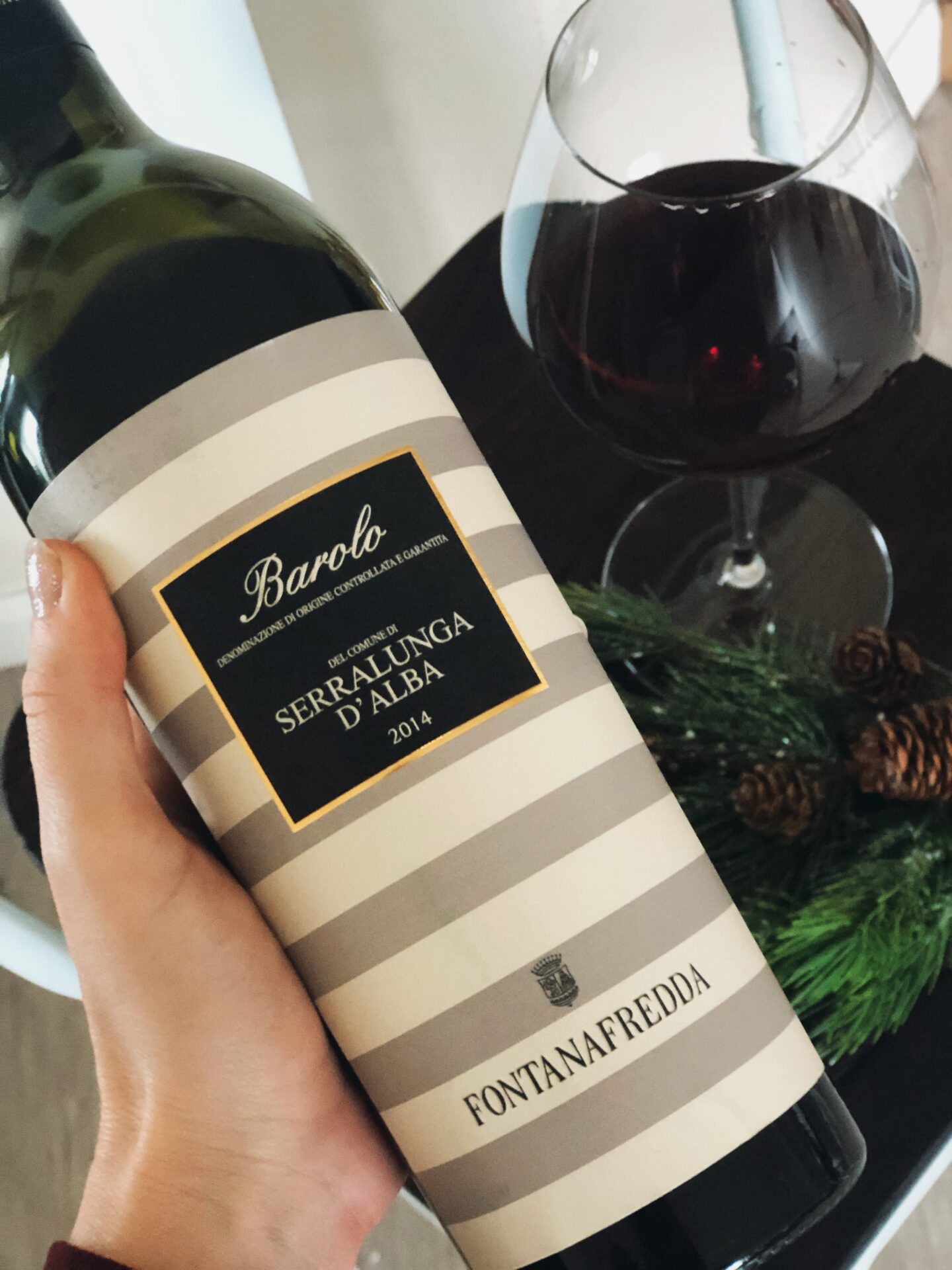
Conclusion
Barolo wine Is one of Italy’s most remarkable reds, with depth, complexity, and elegance that wine lovers cherish. Its ability to age gracefully and develop new layers of flavor makes it a must-try for anyone interested in premium wines.
With its bold tannins, high acidity, and the rich history tied to the Nebbiolo grape, Barolo is truly a special wine that pairs beautifully with hearty dishes. If you’re looking for a wine that combines tradition, power, and finesse, Barolo is the one to enjoy and keep in your cellar.
FAQs:
What foods go well with Barolo wine?
Barolo pairs best with rich dishes like braised meats, truffle risotto, and aged cheeses. Its bold tannins and high acidity balance out these strong, flavorful foods.
Barolo meaning?
Barolo is a dry red wine made from Nebbiolo grapes, produced in the Piedmont region of Italy, also called the “King of Wines.”
Is Barolo A Dry Wine?
Yes, Barolo is a dry red wine made from the Nebbiolo grape, known for its tannic and structured profile
